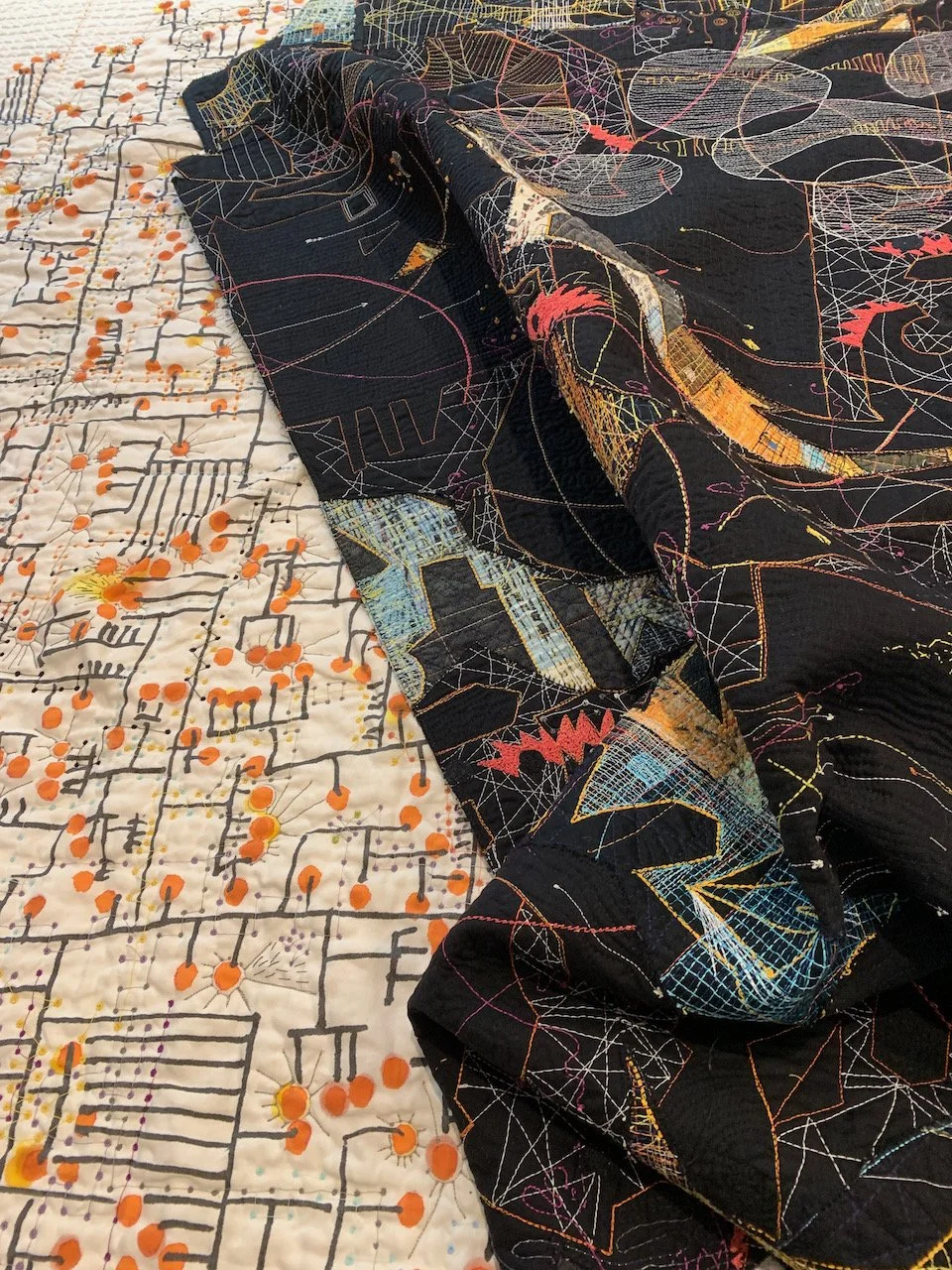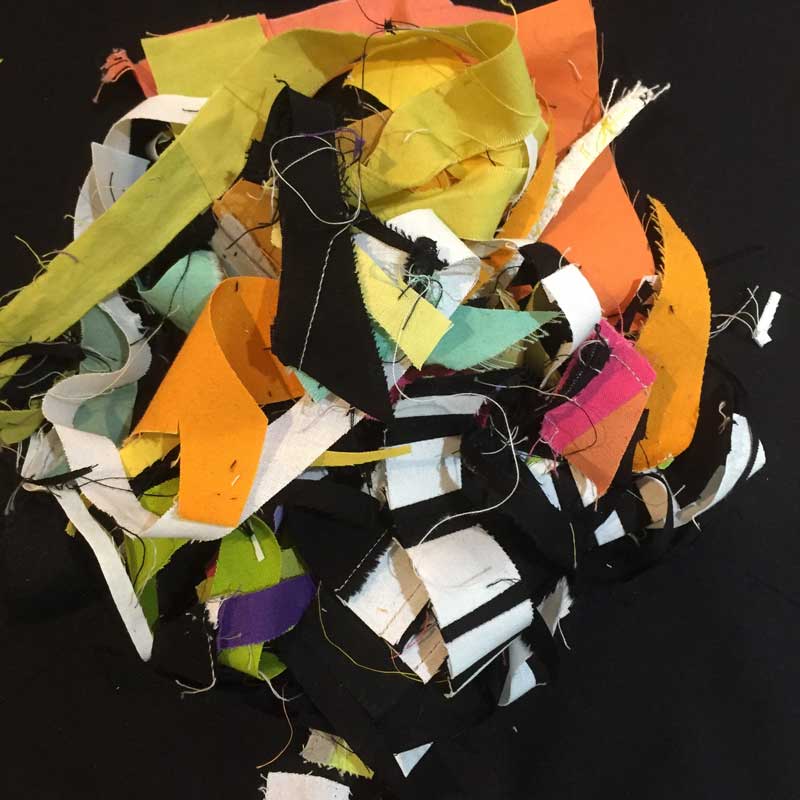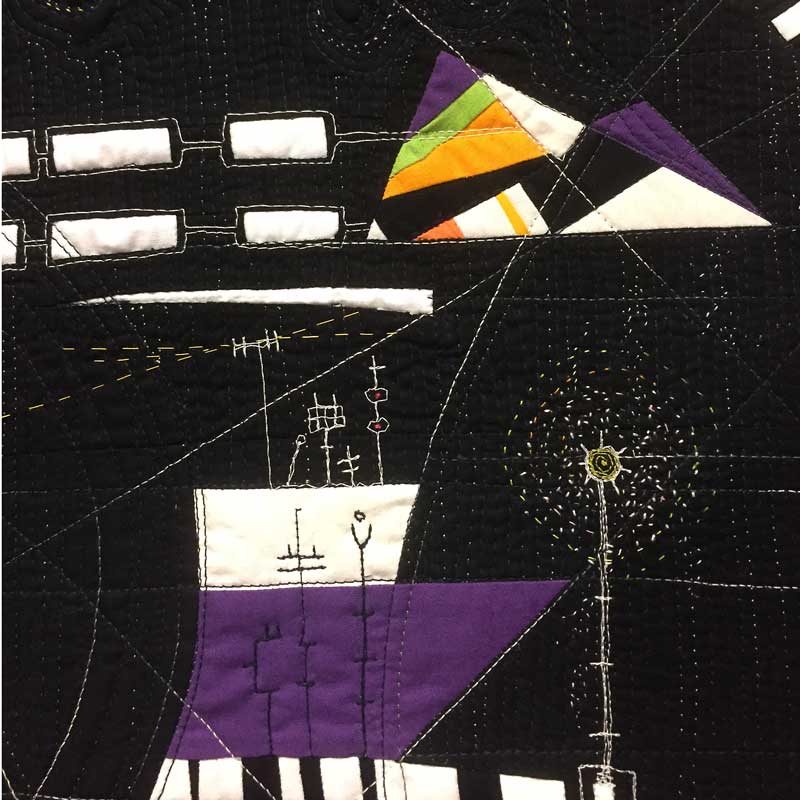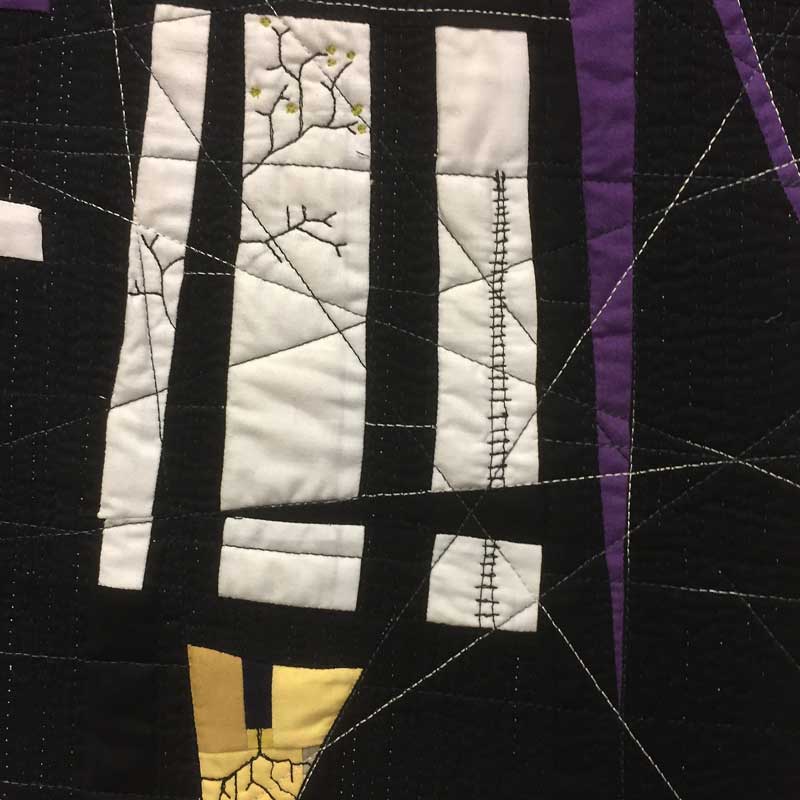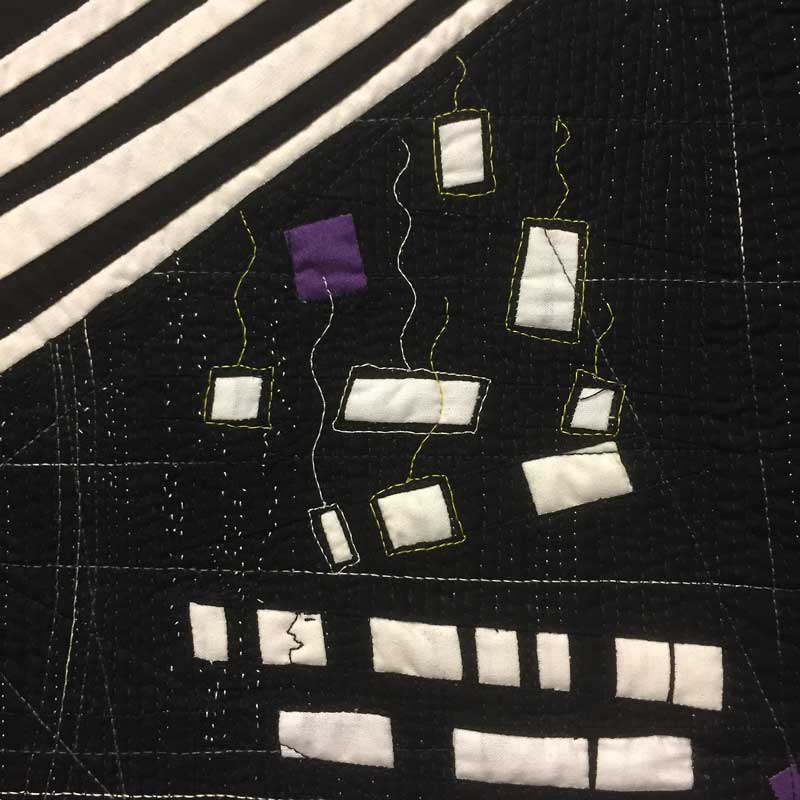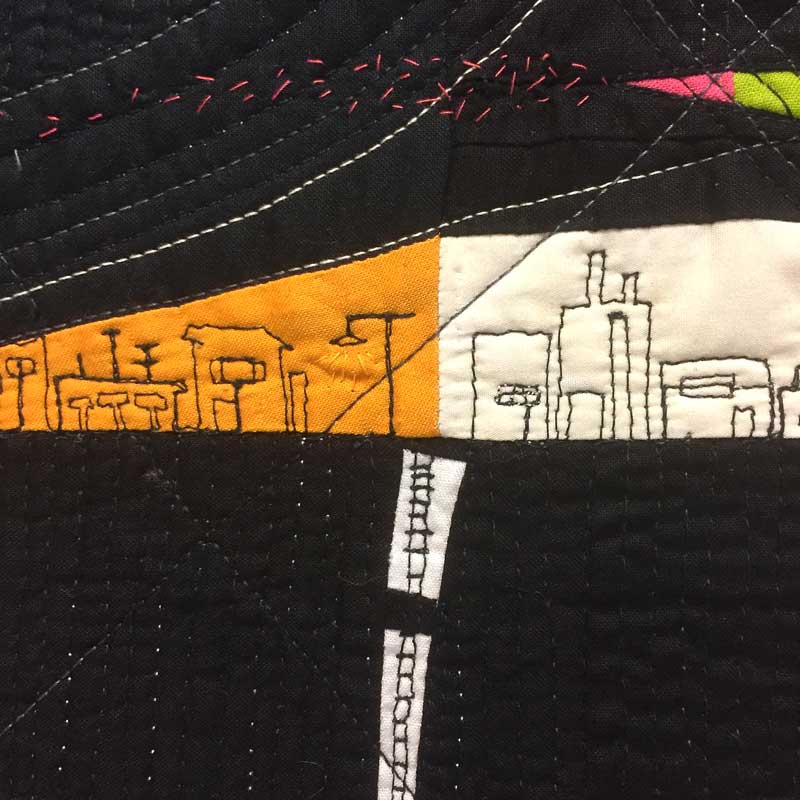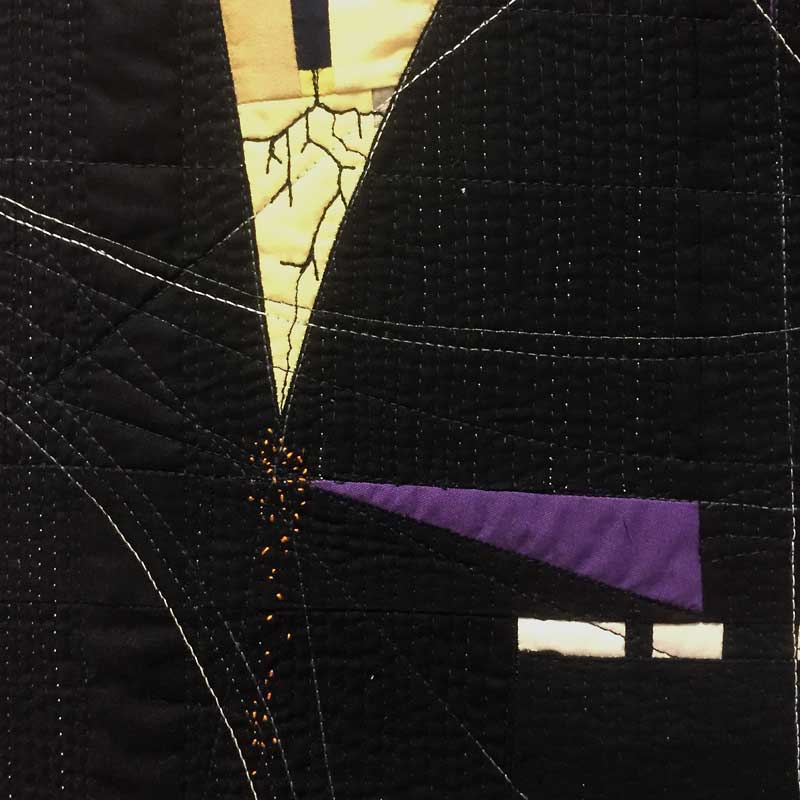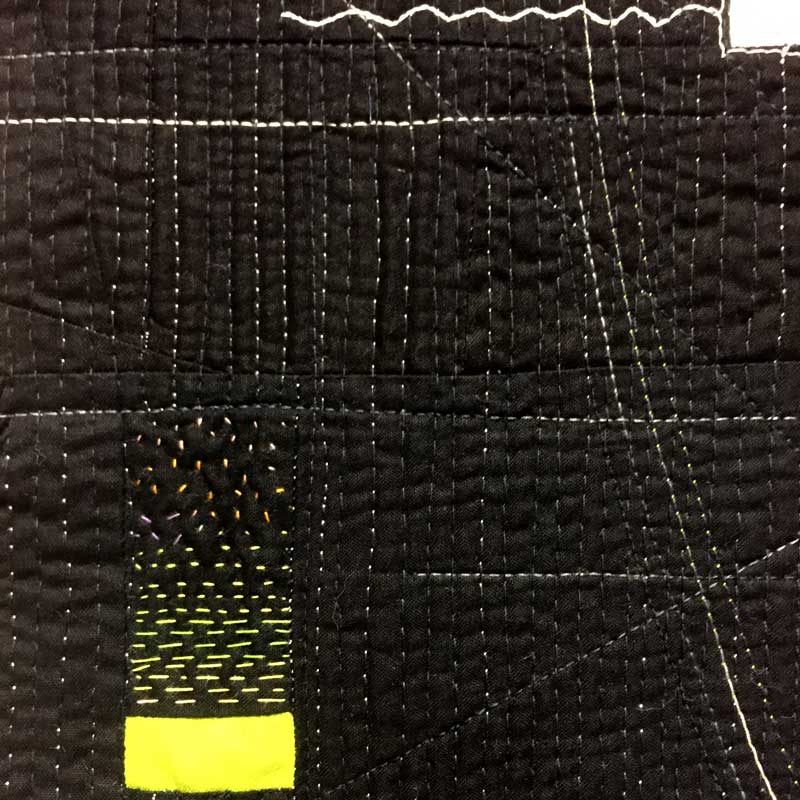I woke up thinking about the difference between webs and grids. Webs reach, weave and beckon. Grids underpin, stabilize and neutralize. Webs are homes and traps. Grids are fences and containers. Webs spiral, grids measure cadence. Webs connect with tenuous intersections but also can withstand thunderstorms and errant wasps. Grids tie things together with a regular rhythm yet can be broken with a casual erasure of consistency.
Webs can have enemies in them, grids can keep the lights on. Webs can be world-wide, grids map the lands and seas. Webs tangle, grids untangle. Grids are a human construct. Webs are a natural phenomenon. They are cousins in understanding where we fit.
Cracks, work in progress, Paula Kovarik
The news of Charlottesville and our president has shattered my sense of safety and calm. It may be why I keep cutting up pieces of fabric into shards and stitching them back together. Quilting this piece begins next week. I could stitch a grid onto it to find order. I could stitch a web of threads over it to hold it all together. Or I might cut it up some more and practice sewing it back together over and over again. Not sure where the thread will take me.


